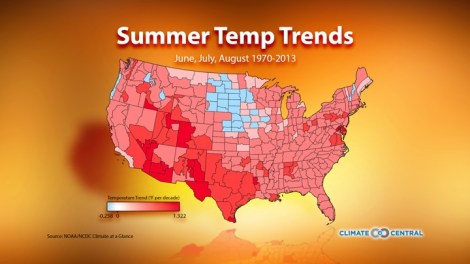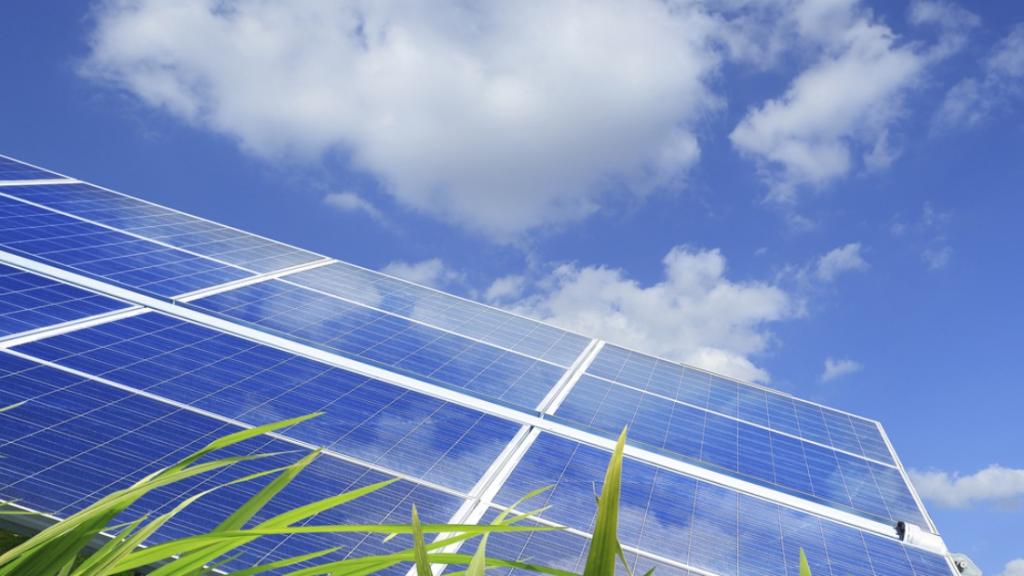Stick a fork in the American Southwest. The ranches there are broiled.
Separate analyses published this week both found that the region has heated up more than any other in the U.S. in recent decades as global warming’s most prominent effect — warming — has taken hold. The first analysis came from Climate Central, which looked at summertime heat:

Climate Central
From Climate Central’s article:
Nationwide, the summer warming trend averages out to a little more than 0.4°F per decade since 1970. The places warming the fastest also happen to be some of the hottest places in the country, with a large chunk of the Southwest and all of Texas warming more than 1°F per decade.
The notable blue spot in a sea of red is the Upper Midwest, where substantial parts of Iowa and the Dakotas have seen a slight cooling trend since 1970. Interestingly, that region is actually home to some of the fastest-warming states when you look at the change in annual average temperatures. Winters in particular have warmed dramatically there over the past 40 years.
On that note, the AP analyzed average year-round temperatures, reaching these conclusions:
The United States is warming fastest at two of its corners, in the Northeast and the Southwest, an analysis of federal temperature records shows. …
The Southwest warming, especially in the summer, seems to be driven by dryness, because when there is little water the air and ground warm up faster, said Katharine Hayhoe, a climate scientist at Texas Tech University in Lubbock.
“Heat and drought are a vicious cycle that has been hitting the Southwest hard in recent years,” Hayhoe said.
And in the Northeast, the temperatures are pushed up by milder winters and warm water in the North Atlantic, said Kevin Trenberth, climate analysis chief at the National Center for Atmospheric Research. And less snow on the ground over the winter often means warmer temperatures, said Alan Betts, a climate scientist at Atmospheric Research in Pittsford, Vermont.
The Southeast and Northwest were among the places that warmed the least. In the Southeast and Mid-Atlantic, industrial sulfur particle pollutants from coal burning may be reflecting sunlight, thus countering heating caused by coal’s carbon dioxide emissions, said Pennsylvania State University professor Michael Mann.
Of course, warming isn’t the only impact that’s being felt from climate change. Another prominent impact is rising seas. And The Washington Post recently reported that high tides have risen by 1.5 feet during the past decade in Norfolk, Va., where water levels have been rising faster than anywhere else on the East Coast.



